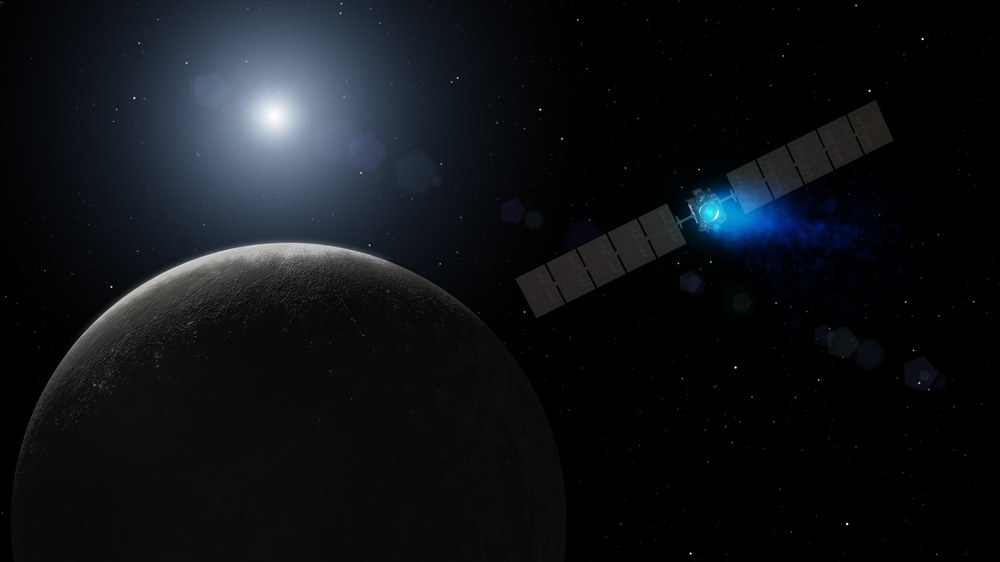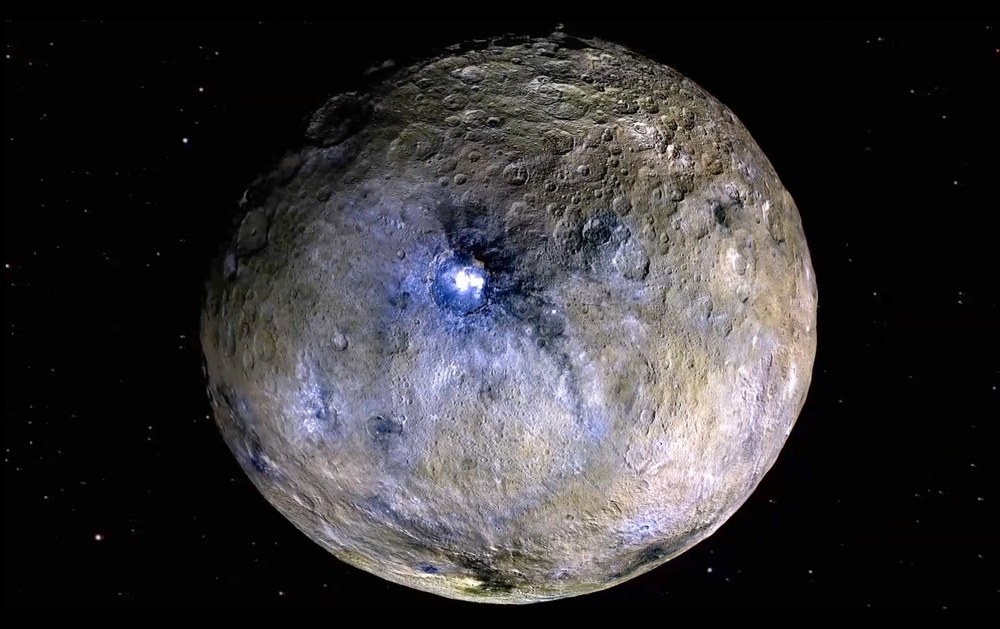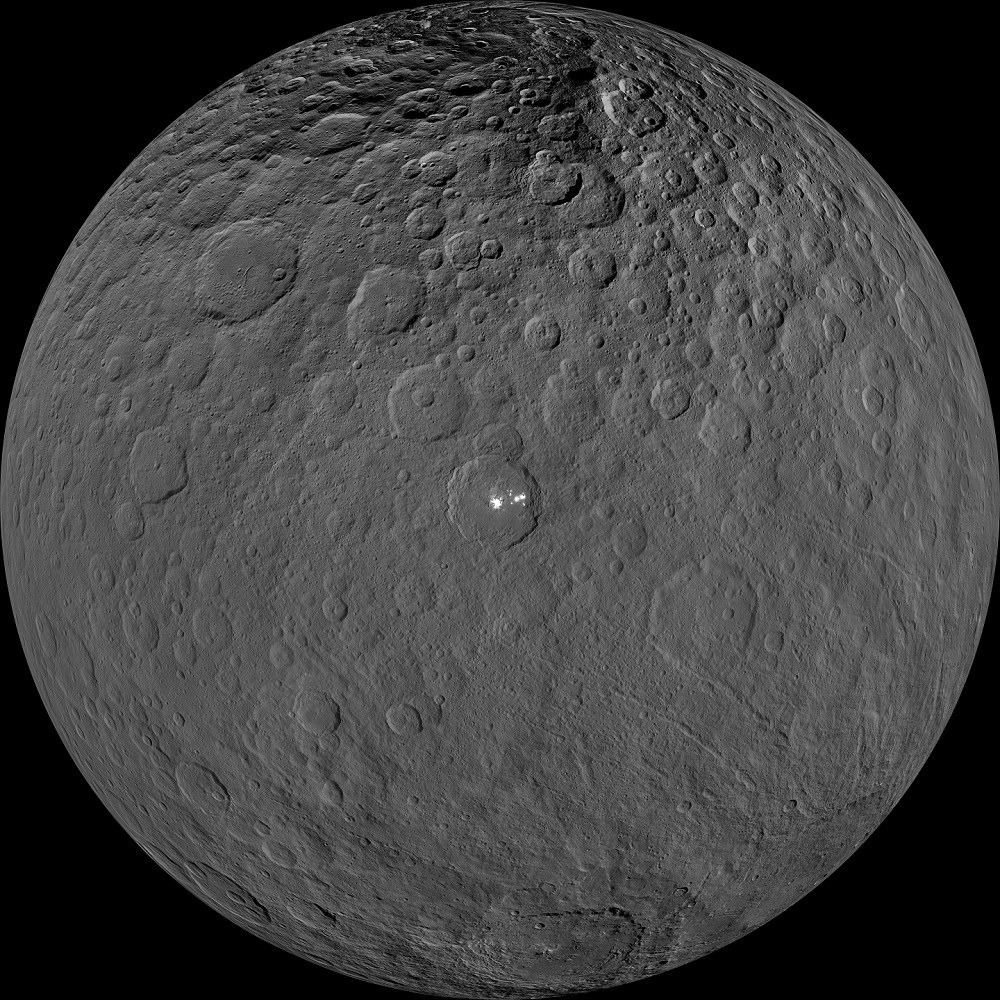Water-rich asteroids came from far outside the asteroid belt
- A previously unknown class of water-rich asteroids has been identified.
- This class of Ceres-like asteroids originates from the outer edge of the Solar System.
- They are an important piece of the puzzle regarding the origin of the water that makes up Earth's oceans.
- Focus: Solar System research, asteroids, exploration
Where did the water that makes up Earth's oceans come from? This question has not yet been definitively answered. When Earth was formed, 4.5 billion years ago, it received a quantity of volatile substances from the primordial solar nebula, which were outgassed from the interior of the young planet during the solidification of an early magma ocean and through active volcanism. An initial atmosphere developed from these gases, from which rain fell, and the first oceans were formed. But water also came to Earth from far beyond – from icy comets and probably also to a considerable extent from asteroids with a high ice content. New infrared measurements performed using a telescope on Hawaii have now led to the identification of a previously unknown class of asteroids. Researchers from the German Aerospace Center (Deutsches Zentrum für Luft- und Raumfahrt; DLR) are part of an international team that was able to identify these planetesimals using infrared spectroscopy. They are now located in the main asteroid belt between Mars and Jupiter.
These asteroids are rich in water – similar to the dwarf planet Ceres, which is also located in this region of the Solar System. "Our computational models show that these asteroids must have arrived in the main asteroid belt through complex dynamic processes, shortly after their formation in the outer regions of the Solar System," explains Wladimir Neumann, a geoscientist at the Technical University of Berlin and the DLR Institute of Planetary Research, who is involved in the scientific study published today in the journal Nature Astronomy.
Small bodies from the outer Solar System brought water to Earth
With an equatorial diameter of approximately 900 kilometres, the dwarf planet Ceres is the largest object in the main asteroid belt. Many other planetesimals are found there. They are remnants of the material from which the planets in the Solar System were formed 4.5 billion years ago. These small bodies are relics that offer clues about the process of planet formation. As the current study shows, these small celestial bodies come from all regions of the early Solar System. But it is likely that small bodies from the outer Solar System in particular eventually brought water to Earth due to orbital perturbations that caused them to migrate inwards. This is thought to be the case because the primordial building blocks of planets in the inner Solar System tended to contain little water, according to Mario Trieloff, who heads the Geo- and Cosmochemistry Research Group at Heidelberg University, who is also involved in the study.
The new infrared spectra were acquired using the NASA-operated Infrared Telescope Facility at the Mauna Kea Observatory on Hawaii by Driss Takir, from NASA's Johnson Space Center in Houston, Texas. These measurements enable the detection of Ceres-like asteroids as small as 100 kilometres in diameter. The infrared spectra allow conclusions to be drawn about their chemical and mineralogical composition. For example, like Ceres itself, the surfaces of the discovered asteroids contain minerals formed by interaction with liquid water. "These measurements show that the spectra, and therefore likely the surface composition and mineralogy of some asteroids over 100 kilometres in diameter are very similar to those of Ceres. The identified asteroids all orbit the Sun in a relatively narrow region between the orbits of Mars and Jupiter and close to Ceres' orbit," Takir explains.
These small celestial bodies are very porous and share this feature with the surface material of the dwarf planet Ceres. This is an indication that the rocky material is still very pristine: "The surfaces of the asteroids were not heated sufficiently to transform them into a compact rocky structure soon after their formation; this occurs when they experience high temperatures. Instead, they have retained their porous and primitive character, typical of the outer icy planets located at great distances from the Sun," explains Vladimir Neumann, who computationally modelled the thermal evolution of the small bodies for this study.
As the largest, almost-spherical body in the main asteroid belt, Ceres, which was 'promoted' to dwarf planet status in 2006, is of great importance as a reference object. Ceres was studied from orbit by NASA's Dawn spacecraft between 2015 and 2018. In addition to providing orbital position data for gravity field measurements, high-resolution images from the German cameras on board Dawn also revealed that there must be a large amount of water ice in the mineral structures and cavities beneath the surface.
The properties of Ceres-like objects and their occurrence in a relatively narrow zone of the outer main asteroid belt suggest that they were initially formed in a cold region at the edge of the Solar System, beyond the orbit of Pluto. Gravitational perturbations caused by the large planets, referred to as ‘giant planet instability’ – the instability of the orbits of the gas giants Jupiter and Saturn during the early stages of the Solar System – altered the trajectories of water-rich asteroids with a slightly lower water content than the new class in such a way that they were 'pushed' from their original region between Jupiter and Pluto toward the Sun, into what is now the main asteroid belt. The new class of Ceres-like asteroids, on the other hand, were moved into the outer part of the main asteroid belt from their orbits beyond Pluto a few million years later by the instability of the ice giants, Uranus and Neptune. This was demonstrated by the numerical calculations of orbital evolutions in the early Solar System carried out by Sean Raymond (Université de Bordeaux). "This study shows that many of the largest objects in the main asteroid belt may have common origins with the dwarf planet Ceres," he said. "Generalising our knowledge of Ceres to a larger population contributes significantly to improving our understanding of the overall evolution of the asteroid belt and the Solar System," explains Jürgen Oberst, head of the Planetary Geodesy Department at the Technical University of Berlin.
Original publication
D. Takir, W. Neumann, S. N. Raymond, J. P. Emery, M. Trieloff (2023): Late accretion of Ceres-like asteroids and their implantation into the outer main belt, Nature Astronomy, https://www.nature.com/articles/s41550-023-01898-x
The research work was funded by the German Research Foundation and the Klaus Tschira Foundation.



